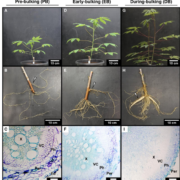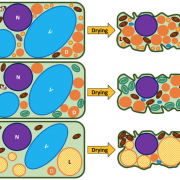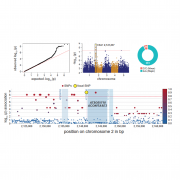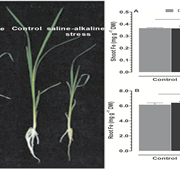Review: Chloroplast function and ion regulation in plants growing on saline soils: lessons from halophytes ($)
 Salinity is a growing problem for food production. Progress has been made in understanding how plants tolerate salinity, mostly focused on strategies for tolerance at the plasma membrane and cytosol. Bose et al. review studies that focus on how the chloroplast is affected by salinity. The authors review the roles of Na+, Cl− and K+ in chloroplast function, and compare salinity responses of chloroplasts from halophytes (salt-tolerant plants) and glycophytes (non-tolerant plants). Although much is still unknown, there is compelling evidence to suggest that chloroplasts of halophytes are uniquely suited for a high-salt environment; “Halophyte chloroplasts may have intrinsically higher levels of oxidative protection, more stable photosynthetic apparatus, and/or better control over chloroplast membrane transport.” Clearly, these findings will be critical for efforts to engineer salt tolerance into crop plants. J. Exp. Bot. 10.1093/jxb/erx142
Salinity is a growing problem for food production. Progress has been made in understanding how plants tolerate salinity, mostly focused on strategies for tolerance at the plasma membrane and cytosol. Bose et al. review studies that focus on how the chloroplast is affected by salinity. The authors review the roles of Na+, Cl− and K+ in chloroplast function, and compare salinity responses of chloroplasts from halophytes (salt-tolerant plants) and glycophytes (non-tolerant plants). Although much is still unknown, there is compelling evidence to suggest that chloroplasts of halophytes are uniquely suited for a high-salt environment; “Halophyte chloroplasts may have intrinsically higher levels of oxidative protection, more stable photosynthetic apparatus, and/or better control over chloroplast membrane transport.” Clearly, these findings will be critical for efforts to engineer salt tolerance into crop plants. J. Exp. Bot. 10.1093/jxb/erx142










Leave a Reply
Want to join the discussion?Feel free to contribute!